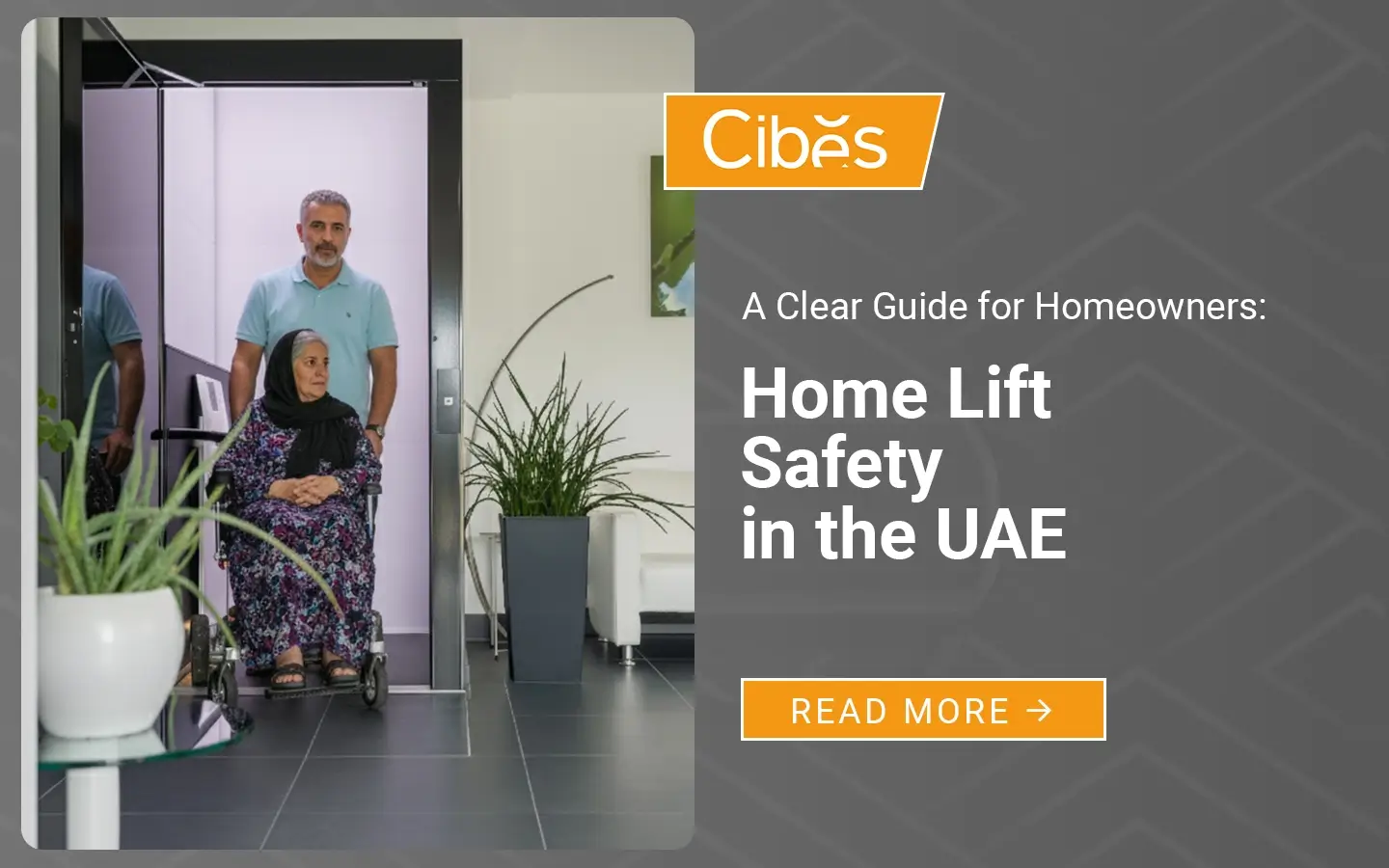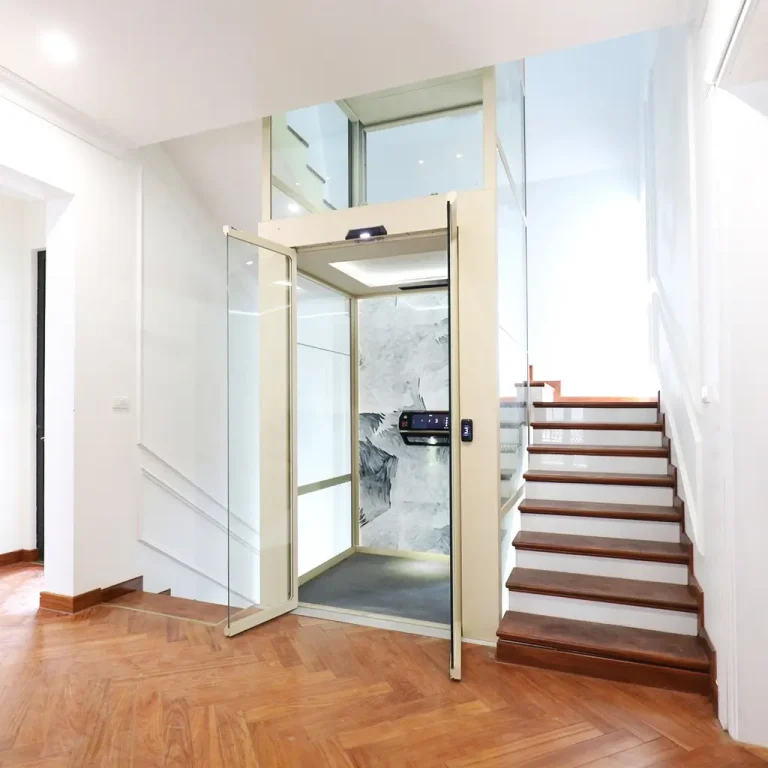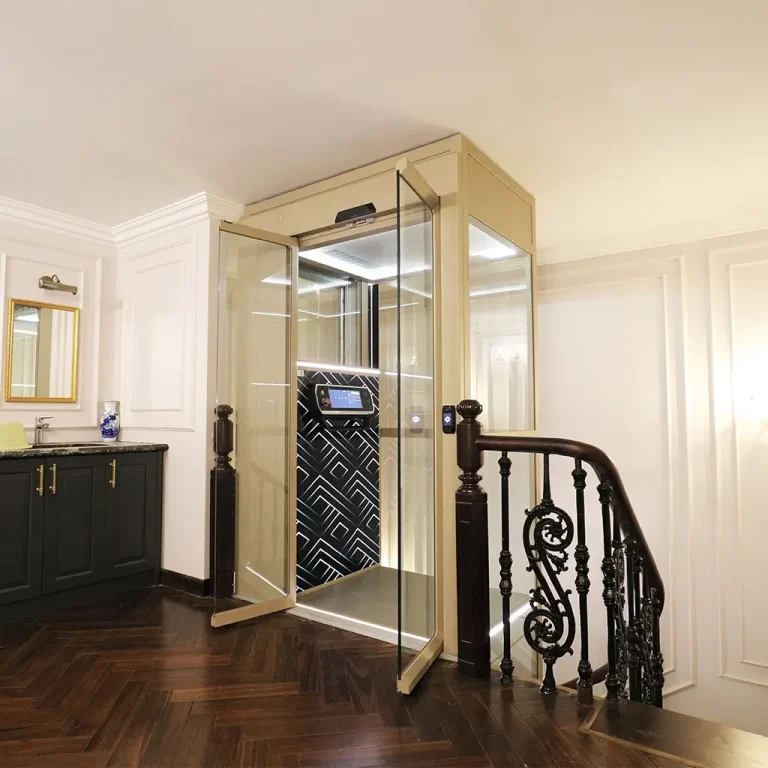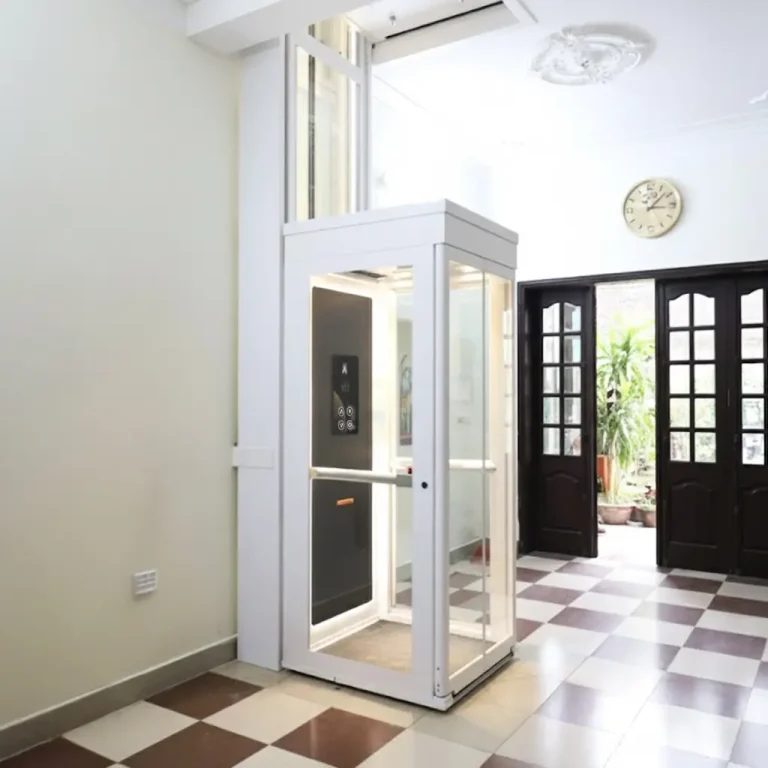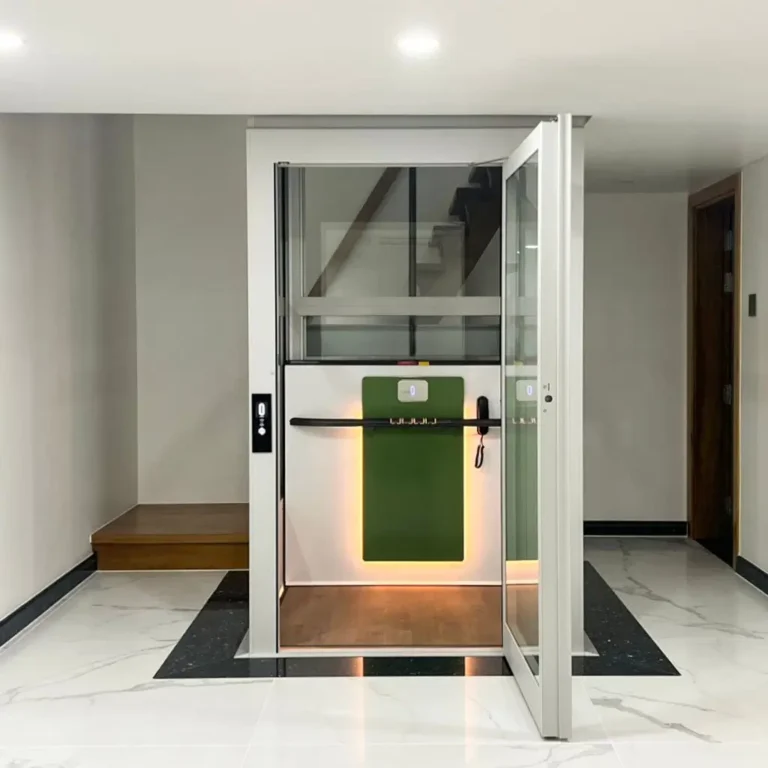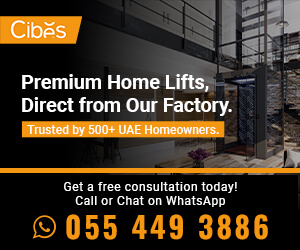TL;DR: Looking for a guide in home lift safety? Screw-driven home lifts are the safest all-round choice for villas, townhouses, and penthouses in the UAE. They remove free-fall risk by design, need no oil or counterweights, work without a machine room or deep pit, and meet modern platform-lift safety standards. Traction and hydraulic lifts are safe when engineered well, but they bring higher mechanical complexity, oil systems, or larger civil needs. Vacuum lifts are elegant but rely on air pressure and have stricter size and load limits. Cibes pioneered the modern screw-driven passenger-lift system and remains the reference brand globally.
What “Home Lift Safety” Actually Means
Safety is not one feature; it’s a system. For residential lifts, key layers are:
- Inherent mechanical safety: what the drive type can and cannot physically do.
- Control-system safety: redundant logic that prevents unsafe motion (often mapped to SIL levels from IEC 61508).
- Regulatory standards: for vertical lifting platforms, EN 81-41 sets manufacturing, installation, and maintenance rules (latest 2024 revision).
If you’re comparing safety features for a home lift in UAE, this guide outlines standards, approvals, and emergency features before we dive into what makes modern home lifts ultra safe.
Drive Types Compared: Safety, Practicality, and Fit for UAE Homes
| Drive type | Core safety traits | Typical civil needs | Common risks/limits | Verdict for UAE homes |
|---|---|---|---|---|
| Screw-driven (platform or cabin) | Self-locking screw/nut eliminates free-fall; low speed; no counterweights; simple kinematics. | No machine room; minimal pit; compact shaft sizes | Nut wear if neglected; requires periodic maintenance (twice per year) | Best all-round safety + installation footprint |
| Traction (roped) with counterweight | Mature safety stack with governors and brakes; high duty capability | Usually larger shaft, headroom, and pit; heavier structure | More moving parts; counterweight and overspeed systems add complexity | Safe when engineered, but often over-spec for villas |
| Hydraulic | Low overspeed risk; proven tech | Machine space for power unit; oil tank; pit; temp effects on oil | Oil leaks, smell risk; higher periodic maintenance | Safe, but oil systems and civil works are drawbacks for homes |
| Vacuum (pneumatic) | Cabin held by air pressure; auto-descend options on power loss | No pit; freestanding tube | Relies on pressure integrity; smaller car size and load; acoustic/vacuum pump considerations | Stylish, but constraints and reliance on pressure balance; not ADA-type use (vendor states non-ADA) |
Why screw-driven wins for safety
The self-locking screw-and-nut drive does not allow uncontrolled descent. Motion stops when the motor stops; there’s no counterweight kinetic energy to manage, and no oil system that can leak or overheat. Pair that with modern electronic safety controls and EN 81-41 compliance, and you get a highly fault-tolerant system for homes.
Standards and Functional Safety, in simple terms
- EN 81-41 (2024): the reference standard for electrically operated vertical lifting platforms (design, installation, maintenance). Use this for platform-type home lifts common in villas.
- IEC 61508 / SIL: methodology for functional-safety integrity; many elevator control components are designed to reach SIL 2–SIL 3, reducing the chance of dangerous failure.
Why Cibes for Screw-Driven Safety
Cibes pioneered the modern screw-driven passenger-lift system and has the longest experience with screw-and-nut driven lifts. That history and scale translate into mature design, supply chain quality, and service know-how, a key to long-term safety.
Cibes Lift safety features you should expect:
- Self-locking screw-and-nut drive design (no free-fall).
- Redundant safety logic in the controller aligned to functional-safety principles.
- Door interlocks and light curtains to prevent movement with obstruction.
- Emergency stop and battery-backed lowering, with manual rescue procedures.
- Compliance with EN 81-41 (platform lifts) and quality systems from established European manufacturing.
For UAE projects, Cibes provides local showroom support, installation, and after-sales; critical to keep the lift safe over decades through scheduled maintenance.
Price Guidance (UAE)
Screw-driven Cibes home lifts in the UAE typically range from AED 80,000 to AED 250,000, depending on model, travel height, stops, finishes, and site works. See the full breakdown here: Home Lift Price in UAE
Recommended Cibes Models
UAE-Focused Selection Tips
- Prioritize inherent safety: choose a drive that cannot free-fall.
- Match the standard to the product: for platform-type home lifts, specify EN 81-41 compliant systems and keep documentation on file for handover.
- Plan civil works early: screw-driven lifts minimize pit and machine-room requirements, reducing structural change and approvals.
- Design for access & rescue: ensure battery-backed lowering and clear rescue instructions in the O&M manual.
- Lock in maintenance: safety is sustained by periodic inspections and part replacement (e.g., drive-nut intervals).
Frequently Asked Questions (FAQ) on Home Lift Safety
Q: Are screw-driven home lifts safer than vacuum lifts?
A: Yes. Screw-driven lifts use a self-locking screw-and-nut mechanism that prevents uncontrolled descent; vacuum lifts rely on air pressure balance and generally have tighter cabin-size and load limits.
Q: What standard should a UAE home platform lift meet?
A: EN 81-41 governs electrically operated vertical lifting platforms, with a new 2024 edition clarifying manufacturing, installation, and maintenance rules.
Q: Do modern home lifts use SIL-rated electronics?
A: Many controllers and safety components are designed to IEC 61508 principles; you’ll see SIL ratings (often SIL 2–SIL 3) for certain safety functions or modules.
Q: What happens in a power cut?
A: Cibes screw-driven lifts include emergency stop and battery-backed lowering or rescue procedures to bring the platform to a safe level.
Q: What’s the typical price range in the UAE?
AED 80,000–250,000 depending on travel, stops, model, and finishes. See Home Lift Price in UAE
Q: Is a machine room required?
A: No. Screw-driven lifts are machine-room-less and need only a shallow pit or ramp, which simplifies villa and penthouse retrofits.
Q: Who invented the modern screw-driven passenger-lift system?
A: Bertil Svedberg of Cibes, the company is widely recognized as the original in screw-driven passenger-lift technology.
